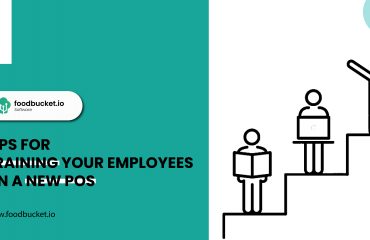There are many reasons why restaurants may want to switch their Point of Sale (POS) system.
The right POS solution can unlock a more satisfying experience for customers in-store and online. Upgrading to a new POS system can also simplify the checkout process, enable the restaurant to create engaging loyalty and incentive programs, and improve the efficiency of your restaurant staff.
However, switching to a new POS software isn’t simply a matter of choosing a different solution and upgrading to newer hardware. Regardless of the reasons for the switch, comprehensive staff training is crucial to a successful transition. The more time management invests in training their staff to use a new POS, the greater the likelihood that the transition will be smooth for customers and staff alike.
If you are considering a new POS or have recently made the switch, here are ways you can train your retail staff to use it effectively.
1. Train staff directly on the new POS system
When it comes to mastering a new POS system, there’s no substitute for hands-on experience.
Many POS providers offer video tutorials and illustrated product documentation to help staff get up to speed on their systems. While a step-by-step video tutorial may provide a useful overview of the process, many people find that doing the process themselves is a far more effective way to learn.
Learning by doing provides the learner with instant feedback and the ability to reflect on what to keep doing, what to tweak and repeat, or what to change altogether. It’s a great way to test competency to know if additional support would be helpful to create success for the learner. It moves us beyond theory. Even restaurant staff who prefer training videos may not retain that information as effectively as they might be using the new POS system themselves. This can result in longer checkout times, customer frustration, and even lost sales.
2. Give staff access to historical POS data
Even if a new POS system is easier to use than a store’s current system, some retail staff may worry that they’ll be losing access to historical sales data, customer profiles, and other important information.
Reassure staff that all of their customer and sales information will be imported from the old POS software into the new one.
During training, show your staff where they can find historical data in the POS system. Their ability to recommend specific products to customers requires it.
It’s worth bearing in mind that imported data may not look the same in a new system. Some reports may combine several data types into a single report, and other data types may be categorized differently in the new system. As such, they may want to consider showing staff how to customize these reports as well as how to access them.
3. Hands-on experience
Once a new POS system has been installed and legacy sales data has been imported, a restaurant owner should give their staff an opportunity to test it and punch some orders on the new POS system. This drill usually contains routine tasks like order punching, Table Management, Payment Process, and Shift Management, etc.
The dummy transactions are very important for learning and getting some hands-on experience with a new system. Punching some real orders requires navigating the unexpected hiccups that often happen in real life. Ideally, you don’t want learners trying a new skill for the first time on the job. Instead, have them practice the skill several times in a real-world context first. Not only will this help learners remember to do the right things, but it will increase their confidence for when it counts. Even the simplest POS systems have a learning curve. For this reason, restaurant owners may want to choose a time when the walk-in customers are fewer like breakfast time or brunch time. Usually, it is seen restaurants don’t have much crowd at brunch time. So that is the best time when your staff can practice on the new POS. As there will be less pressure and the staff can take their time to punch the complete order.
Completing real transactions can also reveal problems that may not be as easily identified during test transactions. This includes apps or integrations that are missing or potential problems with a POS system’s configuration. Hence, it is important for restaurant owners that completing real transactions is just as important as buying a new POS software.
4. Give your staff time to adapt
Migrating to a new POS system can be challenging, and so can training staff to use it. The less time staff has to adapt to a new POS and learn how to use it, the greater the likelihood that mistakes will be made when the system is live.
Offer enough training time for employees to develop muscle memory to access common features and perform routine tasks. The longer staff have to practice conducting transactions and navigating a new tool and workflow, the more confident they’re likely to be during real interactions with customers. This means faster, smoother transactions, fewer mistakes, and happier customers.
Consider the different ways people learn when developing training programs for staff. As such, a one-size-fits-all approach to staff training may not be effective. Consider spending time with individual staff members to ensure that they’re able to complete routine tasks on the new system.
Investing enough time in staff training can save both time and money in the long run.
5. Employee feedback
After introducing staff to a new POS and giving them enough time to learn how to use it, ask specific questions about their experience to surface potential problems and to make staff feel that their opinions and expertise are valued.
Curiosity is vital for building thriving companies and for fostering healthy relationships between managers and co-workers. Asking good questions gives you the power to solicit quality employee feedback, spark innovation, avoid fire drills, and help employees show up as their best selves. Asking general questions about, for example, access to the reports and customer information can be a good starting point. Then, drill down with follow-up questions. Ask for examples of reports employees can’t configure or information they can’t find and offer actionable solutions.
Asking open-ended questions rather than simple yes/no questions can help you get more candid, thoughtful feedback.
Training employees to use a new FoodBucket POS System takes time. But with a little planning and attention to detail, upgrading to a new POS doesn’t have to be difficult.

